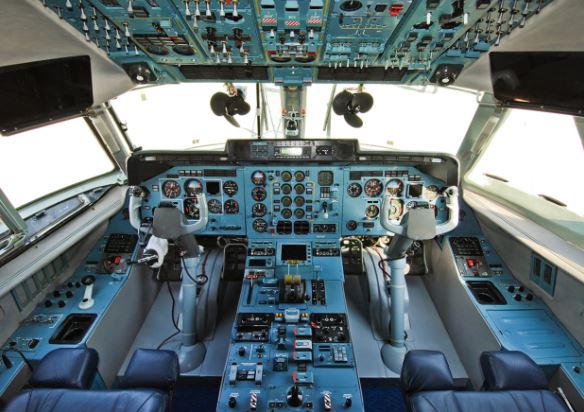Antonov An-140 Specs, Cabin, Engine, and Price – The Antonov An-140 is a twin-engine passenger / cargo aircraft designed and developed by the Antonov Aeronautical Scientific and Technical Complex of Ukraine to operate on regional air routes. It was built to replace the An-24 aircraft which has been operating for 40 years. A total of 25 An-140s were operated worldwide in August 2010. An-140 has six variants which include An-140-100, An-140A, An-140T, An-140TK, An-140VIP Executive and An-142.
An-140-100 is a military version that was built in 2003 to replace the old An-24, An-26 and Yak-40. This variant runs maritime patrols, medical, aerial photography, geological exploration, transportation, and fisheries exploration missions. This extended aircraft feature, maximum take-off weight is higher and longer range.
The An-140A is an advanced version of the An-140, powered by the Pratt & Whitney PW127A turboprop engine. An-140T is a shipping model powered by TV3-117-SBM3 engines. Used by the Russian Navy, this variant is equipped with a large cargo door on the rear of the aircraft. An-140VIP carries 30 passengers.

The An-140 has a conventional design and operates both day and night even under the worst climate conditions. The AI9-3B auxiliary unit integrated in the tail of the fuselage allows planes to take off and land from semi-prepared airfields, unpaved airfields, snow-covered ice fields and short runways.
The An-140 has a passenger entrance with a built-in ladder on the back of the aircraft. This aircraft is equipped with a goods door on the right front to load or lower the cargo. It also houses mating connectors, wing navigation red lights, air holes, clamp roads and warning horns provided by Goodrich Corporation.
The aircraft is equipped with a ventilation system, multichannel entertainment system, noise absorbing panels, cargo hold, cargo loading system, and a strong tricycle landing gear consisting of low pressure tires.
An-140 can rise at the level of 6.8m / s. The maximum speed and cruising of each aircraft are 575 km / h and 460km / h. The maximum distance is 1,380 km and the ferry range is 3,680 km. The service ceiling is 7,600 m. The aircraft takeoff distance is 1,750 m and the landing distance is 1,360 m. The aircraft can operate at ambient temperatures ranging from -550C and + 450C from an airfield located 2,500m above sea level.

The aircraft also offers luggage and cargo compartments with a volume of 9.1 m below the passenger cabin and at the rear of the aircraft. It can accommodate 1.84 tons of goods, which is 1.3 to 1.5 times greater than the capacity of conventional aircraft from the same category. Pallets can be placed on the front of the passenger cabin.

An-140-100 is a military version that was built in 2003 to replace the old An-24, An-26 and Yak-40. This variant runs maritime patrols, medical, aerial photography, geological exploration, transportation, and fisheries exploration missions. This extended aircraft feature, maximum take-off weight is higher and longer range.
The An-140A is an advanced version of the An-140, powered by the Pratt & Whitney PW127A turboprop engine. An-140T is a shipping model powered by TV3-117-SBM3 engines. Used by the Russian Navy, this variant is equipped with a large cargo door on the rear of the aircraft. An-140VIP carries 30 passengers.

Antonov An-140 Specs
An-140 development began in 1993 at the Kharkov Aircraft Production Plant in Ukraine. Production was also assigned to its partner AVIACOR Aviation Plant JS (Samara, Russian Federation). Three An-140 prototypes were built, the first came from the Kiev Factory in June 1997. The prototype took off for its inaugural flight in September 1997 and began operations in October 1999. The second prototype was introduced in 1998.The An-140 has a conventional design and operates both day and night even under the worst climate conditions. The AI9-3B auxiliary unit integrated in the tail of the fuselage allows planes to take off and land from semi-prepared airfields, unpaved airfields, snow-covered ice fields and short runways.
The An-140 has a passenger entrance with a built-in ladder on the back of the aircraft. This aircraft is equipped with a goods door on the right front to load or lower the cargo. It also houses mating connectors, wing navigation red lights, air holes, clamp roads and warning horns provided by Goodrich Corporation.
The aircraft is equipped with a ventilation system, multichannel entertainment system, noise absorbing panels, cargo hold, cargo loading system, and a strong tricycle landing gear consisting of low pressure tires.
Antonov An-140 Engine
The An-140 is powered by two TV3-117VMA-SBM1 turboprop engines driven by two six-bladed AV-140 composite propellers. Each machine can produce 1,838kW of output power. The machine was produced by Ivchenko Progress Zaporozhye, Klimov Scientific Industrial Company and Motor Sich. The engine is 2.9m long, 0.98m wide and 1.2m high. The dry weight is 570kg.An-140 can rise at the level of 6.8m / s. The maximum speed and cruising of each aircraft are 575 km / h and 460km / h. The maximum distance is 1,380 km and the ferry range is 3,680 km. The service ceiling is 7,600 m. The aircraft takeoff distance is 1,750 m and the landing distance is 1,360 m. The aircraft can operate at ambient temperatures ranging from -550C and + 450C from an airfield located 2,500m above sea level.

Antonov An-140 Cabin and Interior
An-140 has a large cabin with plenty of space for passengers. The cabin holds 52 passengers in a four-seat configuration parallel. It is divided into three zones which include an exclusive lounge with four seats, a business class equipped with 22 seats and an economy class with 26 seats.The aircraft also offers luggage and cargo compartments with a volume of 9.1 m below the passenger cabin and at the rear of the aircraft. It can accommodate 1.84 tons of goods, which is 1.3 to 1.5 times greater than the capacity of conventional aircraft from the same category. Pallets can be placed on the front of the passenger cabin.









No comments:
Post a Comment